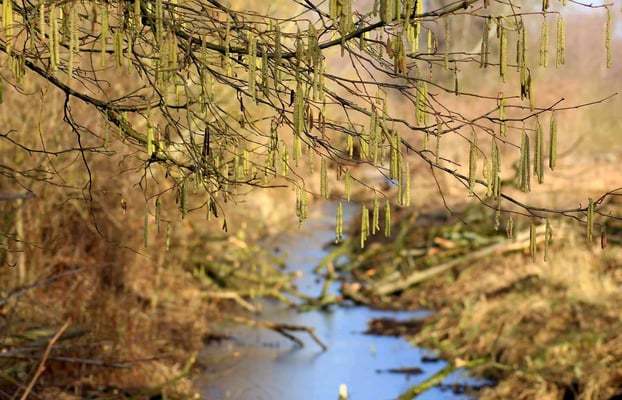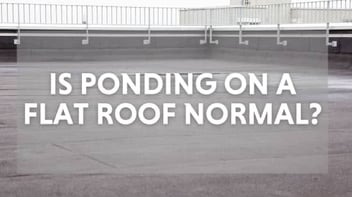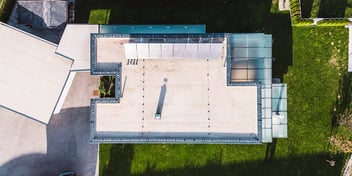- Home »
- Learningcenter »
- How you can reduce local water pollution
How You Can Reduce Local Water Pollution

You have more of an impact on local water pollution than you might think. Residences generally exist in a watershed, so any runoff from your home will eventually drain into the local waterways.
A watershed is a land area that drains into a specific natural waterway, such as a stream, river, or lake. Watersheds come in all sizes, and smaller watersheds may, themselves, drain into larger ones. Streams, for example, usually flow into rivers or lakes.
Some water soaks into the ground, but a lot of local water pollution comes from runoff. Runoff occurs when rain or other precipitation flows off a roof, driveway, or road and into a storm drain. Storm drains typically lead to natural bodies of water.
Excess water from lawns or fields likewise enters storm drains. Runoff carries whatever substances it comes into contact with, including pollutants, into the storm drains and, eventually, to the natural waterways.
Nutrient pollution is a significant problem related to runoff. It occurs when excessive amounts of nitrogen, phosphorus, and other nutrients usually used for fertilizer enter local waterways through runoff points.
Nutrient pollution leads to eutrophication, which is the over-growing of algae. This issue alters aquatic ecosystems and lowers water quality.
What can the owners of homes, businesses, and fields do to prevent nutrient pollution and other local water quality problems?
Beware of Pesticide Use
Pesticides can contaminate water in two major ways. Chemicals that you apply to a lawn, garden, or farm field can drain into waterways via a runoff system. They can also soak into the ground, enter the water table, and find their way into streams or the water supply.
These chemicals are toxic to bugs and weeds, but they are also poisonous to humans and animals.
What can homeowners do? One option is to use organic, non-toxic pesticides. Another is to use alternative pest control practices, such as hand weeding, planting flowers or trees that do not attract pests or else attract beneficial insects and predators (as a natural pest control option), or using agriculture methods such as contour farming and crop rotation.
Prevent Soil Erosion
Soil erosion isn’t only bad for farming and landscaping; it also changes waterways.
Eroded soil washes into storm drains as sediment. When this sediment runs into waterways, it can choke aquatic life, increase water temperature, and introduce any pollutants and bacteria that it contains.
There are a few ways to prevent soil erosion. A well-kept lawn with plenty of perennial plants or trees can hold the soil in place. You can put mulch, wood chips, or landscaping stones in unplanted areas to combat erosion and assist efficient runoff.
Keep Your Vehicle in Good Condition
You also need to look beyond your lawn. Cars that leak fluids, for example, contribute to water pollution. The oil or antifreeze gets washed down storm drains and into waterways, where they prove toxic to aquatic life.
To prevent this type of pollution, you can regularly check your car for leaks and place drip pans to collect them where they do occur.
Also, you should never pour fluids, including oil and antifreeze, into storm drains or on the ground. Most areas have recycling centers that accept used oil and antifreeze, as well as car batteries and other potentially toxic fluids.
Collect Runoff
Rainwater won’t stay on your roof or driveway. Instead, it will run off into storm drains. On the way, it collects pollutants and sediment and carries them into the waterways. To prevent this issue and to avoid erosion and other potential pollution, you can try collecting the runoff from your roof.
Consider installing a rain barrel and making sure your roof has a proper gutter system to deliver water to the barrel. A gutter update may be affordable and convenient when you undergo a roof replacement.
A professional roofing contractor will be able to handle this project to meet your specifications.
You should also make any necessary repairs to your roof to ensure proper drainage into rain barrels or onto permeable garden areas where the runoff can soak into the soil instead of entering storm drains.
Be Careful During Construction
The main water pollution problem related to construction has to do with sediment rather than toxic chemicals. This is known as sediment pollution, and large construction can be a major contributor. Dirt, sand, and other types of deposits get disturbed or moved during building projects. They can easily wash into waterways in large amounts.
Construction companies can ensure that there are buffers of vegetation that can catch sediment and separate it from runoff water. They can also remove dirt and sand from the site so that it does not wash into the drainage system. Commercial roofers and other contractors can manage the waste created by their projects so that it does not contribute additional sediment into the watershed.
Clean Up After Your Pets or Livestock
Pet and livestock waste can affect water quality in two major ways. First, it can contribute to nutrient pollution by increasing the growth of algae.
Additionally, pet waste can transfer various pathogens that might be harmful to humans and other animals. Bacteria or diseases could enter the water system and water supply via runoff or soaking into the ground.
The easiest way to avoid this issue is to pick up pet waste and dispose of it in the trash can. You can maintain grass or plant buffers that remove livestock waste from runoff water before it enters the drainage system.
Dispose of Waste Properly
The garbage you generate in your household or business can easily find its way into waterways. The same applies to liquids that you flush or pour down your drain.
You can dispose of oils, fats, and food-based liquids in the trash, rather than pouring them down the drain. You can also take household chemicals to a recycling center rather than dispose of them via your drain or toilet.
You may also consider using organic waste, such as vegetable peels, as compost instead of throwing it in the trash. Recycling plastics and metals is an excellent way to keep them from entering a landfill, where they could leech into the groundwater.
Maintain Your Septic Tank
If improperly maintained, your septic tank can be a significant contributor to nutrient pollution via its drain field (the system of perforated pipes that deliver the waste to the surrounding soil for breakdown by bacteria).
To maintain your septic tank, you need to have it serviced every two to five years. Also, you can avoid using your sewage system to dispose of household waste unnecessarily.
Carefully Manage Private Streams and Ponds
Private streams and ponds are part of the watershed, and they will eventually end up flowing into larger waterways. Any water pollution issues, such as nutrient pollution, that affect your private ponds will eventually spread to larger bodies of water.
The use of vegetation around your property’s water feature to create a riparian zone can stop nutrient pollution and sediment buildup. Such vegetation can also catch sediment as it drains out of your waterways and into other parts of the watershed.
Be Aware of Your Local Ecosystem
Your local ecosystem may have specific vulnerabilities, unique animal or plant populations, or particular drainage patterns. You can take these things into account when making a plan for managing your contribution to water pollution.
 Call (678) 365-3138
Call (678) 365-3138


